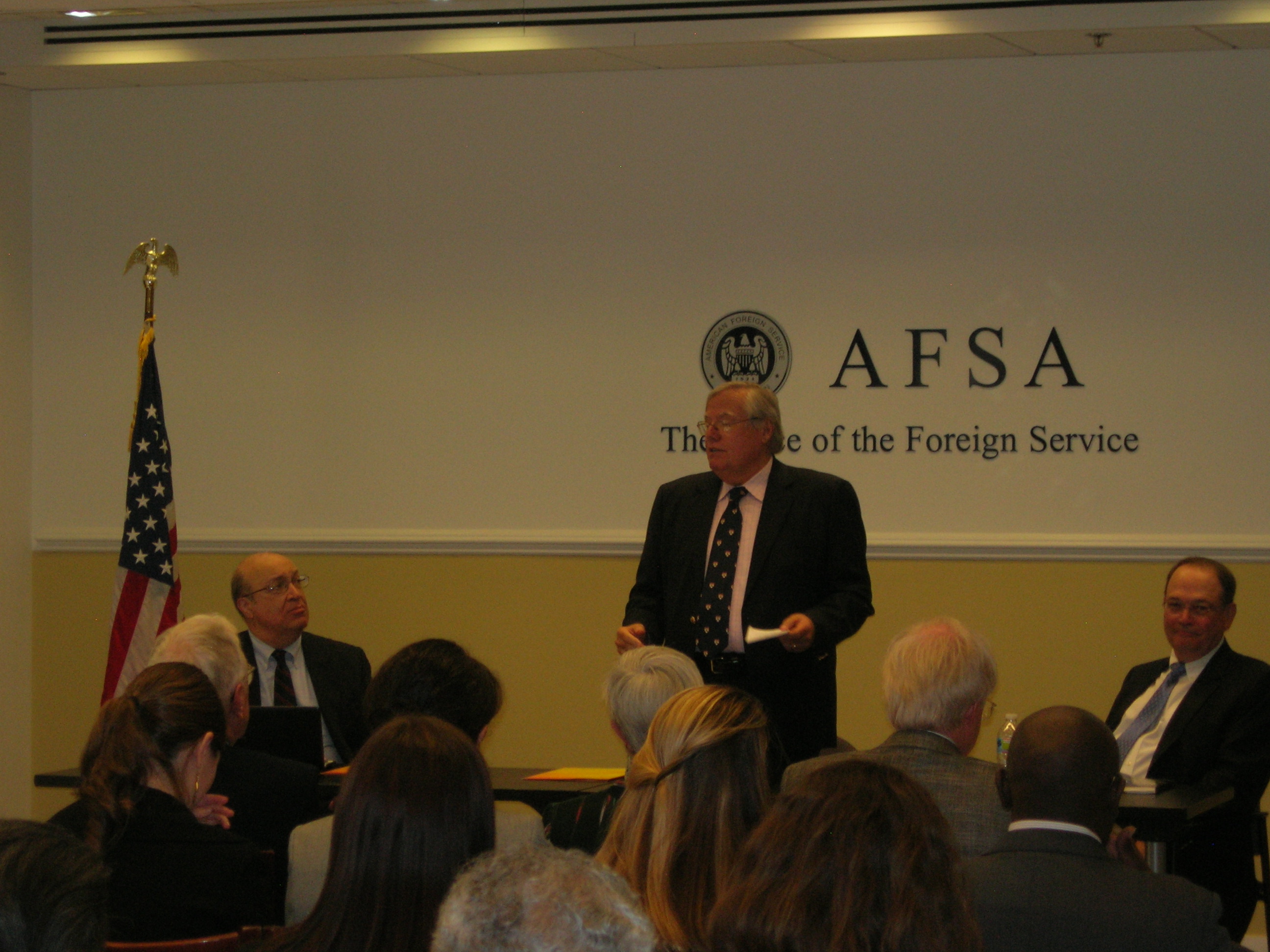A recent book from Martha Bayles, a lecturer in humanities at Boston College, tackles the question of how American entertainment industry products confound official U.S. government efforts to represent the nation to...
KEEP READINGThe CPD Blog is intended to stimulate dialog among scholars and practitioners from around the world in the public diplomacy sphere. The opinions represented here are the authors' own and do not necessarily reflect CPD's views. For blogger guidelines, click here.
Washington DC USC forum focuses on person-to-person contacts
WASHINGTON – The personal touch was the focus of a USC public diplomacy forum here last week, the first in a series of 2012-2013 USC public diplomacy programs in the nation’s capital.
John R. Beyrle, former U.S. ambassador to Russia, was another presenter, describing the different benefits of what he called “wholesale” and “retail” public diplomacy. Wholesale public diplomacy is an important tool to reach an entire country – for example, he said, to counter the widespread belief that Americans are hostile to Russia. But he said he believed nothing was as effective as one-on-one contacts between Americans and Russians.
“The retail part is much more expensive and harder to do,” said the ambassador, “and equally as important.”
Jean Manes, who had just flown from her post in the Kabul embassy the previous night, addressed the role of Facebook and digital media. She said the Internet enabled U.S. public diplomacy to reach members of the Afghan public who would never visit an American exhibit or library in person.

Jean E. Manes, Staff Director for Resources, U.S. Department of State, just back from post in Kabul (after 30 hours of flying the previous day/night!)
“Social media has completely changed that,” said Manes. “We had a crew from National Geographic filming snow leopards for two weeks. Who knew there were snow leopards in Afghanistan?”
The resulting documentary is being shown around the world, but it is attracting special interest in Afghanistan, according to Manes, where USAID and the U.S. government are given credit for recognizing one of the country’s natural treasures.

William Kiehl, editor, "The Last Three Feet: Case Studies in Public Diplomacy" (Powell on L, Jacobs on R)
Beatrice Camp, now at the Smithsonian Institution, was another presenter. Camp described her experience as the head of the U.S. Consulate in Shanghai during the planning of the American pavilion at the 2010 Shanghai Expo.
“Both sides had to want it,” said Camp, “and the Chinese wanted it badly. If China wanted it we needed to be there.”
But the project was all but dead until 2009, when the new Secretary of State, Hillary Clinton, made it a priority. Secretary Clinton also helped organize a fundraising drive, because no public money could be spent on the exhibit.
“I always knew we would have a pavilion,” Camp said, “because it was unthinkable that we would not.”
The pavilion attracted little attention in the U.S., according to Camp, but in China it was a huge success for America.
“It was the largest public diplomacy audience in my entire career,” she said. “We wound up welcoming 7.3 million visitors.”
The forum was organized in partnership with the USC Annenberg Center on Communication Leadership and Policy and the Public Diplomacy Council. The USC Washington, D.C., public diplomacy programs will continue in the fall covering topics including international broadcasting and how the rest of the world sees the U.S. election campaign.
http://uscpublicdiplomacy.org/sites/uscpublicdiplomacy.org/files/legacy/..." width="359" height="294" /
Visit CPD's Online Library
Explore CPD's vast online database featuring the latest books, articles, speeches and information on international organizations dedicated to public diplomacy.
POPULAR ARTICLES
-
January 2
-
December 15
-
December 17
-
November 25
-
December 17
Join the Conversation
Interested in contributing to the CPD Blog? We welcome your posts. Read our guidelines and find out how you can submit blogs and photo essays >.













